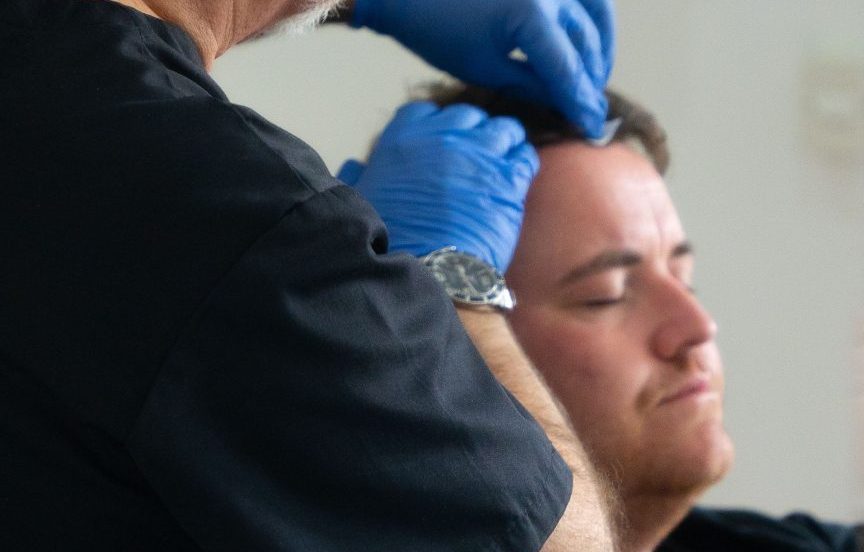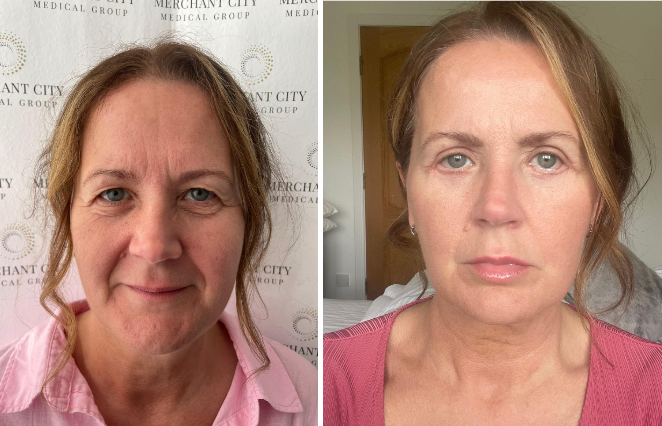
Blepharoplasty (Eyelid Surgery) and All it Entails
Eyelid Surgery
Blepharoplasty and All it Entails
Blepharoplasty before and After of our patient.
Eyelid Surgery
Eyelid surgery, sometimes called “eye lift surgery” or blepharoplasty, is a cosmetic treatment. It changes the skin around your eyes and on your eyelid. Plastic surgeons can enhance your eye function and rejuvenate your appearance with this procedure. Your eyelid skin expands with ageing. Bags under your eyes, droopy lids, sagging skin, and brows can all result from this. This plastic surgery can decrease your peripheral vision in addition to making you appear older. Excess skin, fat around your eyes, and muscle may be removed during the surgery. Both the upper and lower eyelids might be surgically treated simultaneously or apart.
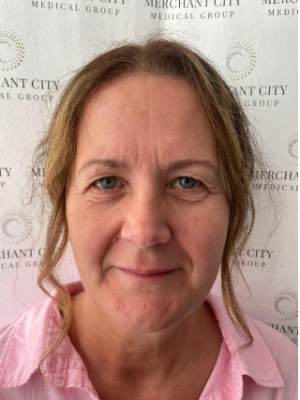

Functional blepharoplasty:
The extra skin obstructing your vision field is removed with a functional blepharoplasty. Should the procedure be deemed medically necessary, medical insurance might cover it. The degree of vision impairment can be ascertained using a Humphrey Visual Field Analyser to test your visual field.
Cosmetic Blepharoplasty
Both the upper and lower eyelids may be treated with cosmetic blepharoplasty. Depending on the kind of lower eyelid blepharoplasty, either the extra skin in the lower eyelid is removed, or the extra fat is redistributed or removed. Before having a blepharoplasty, you should have reasonable expectations. The treatment does not much change your face, although your eyelids may look better.
Eyelid surgery, or blepharoplasty, can enhance the appearance of the skin surrounding your eyes. This operation removes extra skin from the upper eyelids and reduces the bagginess of the lower eyelids. Skin gradually loses its suppleness as it gets older.
Excess skin gathers in your upper and lower eyelids due to a lack of suppleness and the constant pull of gravity. You can get blepharoplasty on your lower, upper, or both eyelids.
Reasons Why People Undergo Eyelid Surgery (Blepharoplasty)
When ageing becomes apparent, the area surrounding the eyes is frequently the first to display symptoms. As you age, your eyelids appear puffed, sagging, and wrinkled because your skin loses flexibility and fat cushioning. The following are five typical explanations of why people choose to undergo eyelid surgeries:
To Improve Vision
”Upper eyelid surgery may be medically required to treat droopy eyes, but it can also benefit cosmetic surgery patients. It is possible to tighten loose and sagging muscles to aid your vision and remove years from your face.”
Make a Distinct Fold Line on the Upper Eyelid
”Upper eyelid surgery to create a fold line is a modest alteration that can give the face a more youthful appearance.”
Get Rid of the Under-Eye Bags
”During eyelid surgery, fat deposits, specifically on the upper and lower eyelids, reduce the visibility of dark circles and eliminate bags under the lower lids.”
Remove Wrinkles and Extra Skin from the Lower Eyelid
”Sagging under the eyes and wrinkles can result from excess skin. To help you look better, extra skin and fat can be cut off, and your skin can be tightened.”
Reduce Any Puffiness
”Upper and lower eyelid surgery can treat puffy eyes by tightening the skin and eliminating extra skin.”

The following are suitable candidates for eyelid surgery
- Healthy people without any illnesses that could prevent them from healing
- Smokers
- Those with a good mindset and reasonable objectives
- Those without significant eye disorders
Also, ensure your doctor knows your health condition, especially if you suffer.
- Eye conditions such as detached retina, dry eye, and glaucoma
- Disorders of the thyroid, including hyperthyroidism, hypothyroidism, and Graves’ disease
- High blood pressure, heart disease, and other circulatory disorders
- Diabetes
Healthy nonsmokers over thirty with concerns about their upper or lower eyelids are good candidates for this plastic surgery technique.
Let’s summarise the quality of a good eyelid surgery.
The
Blepharoplasty
Procedure
The eyelid procedure calls for patient’s preparation so that they can get into actual surgery.
So, how is a patient supposed to prepare for the procedure?
How to Prepare for Eyelid Surgery
You will have a scheduled appointment with a healthcare professional before blepharoplasty.
A plastic surgeon expert, an ophthalmologist (a specialist in eyes), or an ophthalmologist focusing on plastic surgery near the eyes (an oculoplastic surgeon) could be among the providers you consult.
Your physician will inquire about prior surgical procedures.
Additionally, your physician might inquire about any prior or present medical history of dry eyes, glaucoma, allergies, circulatory issues, thyroid issues, or diabetes.
The questions your provider will ask you also concern the use of alcohol, tobacco, vitamins, herbal supplements, and illegal drugs.
A favourable outcome might be facilitated by discussing your goals for the surgery.
Your healthcare professional will discuss the likelihood that the operation will be successful for you.
Before undergoing eyelid surgery, you have the following examinations.
This may entail measuring various areas of the eyelids and testing the production of tears.
This is done to check for blind spots in the corners of your eyes, also known as peripheral vision.
This is required to back up a claim with insurance.
Taking pictures from various perspectives aids in surgical planning and records any medical justifications needed to bolster an insurance claim.
Also, your provider probably wants you to stop the following:
Stop aspirin, warfarin (Jantoven), and other medications or herbal supplements that can worsen bleeding should all be stopped.
Find out from your doctor how long before surgery you should stop using these medications.
Only take medications that your surgeon has recommended.
A few weeks before surgery, stop smoking.
Smoking can hinder the body’s capacity to recuperate following surgery.
If your surgery is outpatient, arrange a driver to take you to and from the procedure.
After surgery, arrange for someone to remain with you the first night back.
Upper Blepharoplasty
Your upper eyelid’s natural crease will be the site of incisions made by your surgeon during an upper blepharoplasty. When your eyes are open, these incisions won’t be visible. Your surgeon will close the incisions once the extra skin and fat have been removed.
Lower Blepharoplasty
Your lower eyelash line will be the point of incision your surgeon makes during a lower blepharoplasty. This incision will be used to remove extra skin from your lower eyelid. Transconjunctival incisions, hidden inside your lower eyelid, can also remove or redistribute extra fat and treat problems with your lower eyelids.
Blepharoplasty might involve your lower eyelids, upper eyelids, or both, depending on your goals and your surgeon’s opinion.
What Happens During the Actual Procedure?
How Much Time Does it Take to Have a Blepharoplasty?
An upper blepharoplasty usually takes a surgeon between 45 and 1 hour to accomplish. Depending on whether extra work is done or if fat is relocated, doing the upper and lower eyelids simultaneously takes roughly two hours.
What Happens After the Eyelid Procedure
There will be a stitch in each of your top lids for around a week. If the cuts are done on the inside of your lids, your lower lids won’t need to be stitched. Both your upper and lower lids may frequently swell and bruise. You should plan on staying home from work and limiting your activities for a few days after surgery to give your eyelids time to heal.
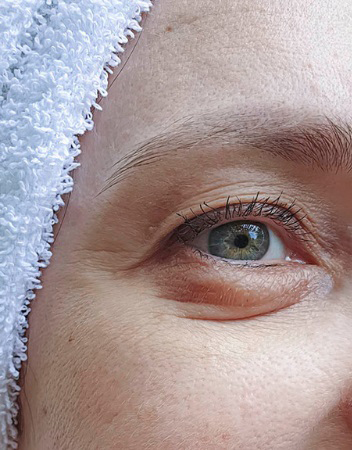
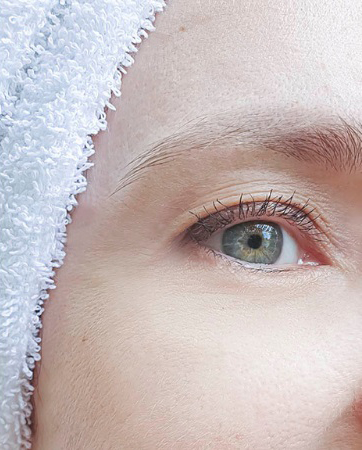
Compared to other areas of the face or body, eyelid incisions heal exceptionally well in most cases.
However, if sutures are not done correctly or wounds are not cared for after surgery, there is a chance that visible, permanent scarring will result.
Upper eyelid scar formation can be treated, but may need re-excision or laser therapy. It can appear as hypo- or hyperpigmentation and is hard to conceal.
Although it could be an issue for both upper and lower blepharoplasties, the former are more prone to experience it.
A transconjunctival technique, which makes an incision on the rear of the eyelid, is frequently used in lower eyelid surgery.
Conversely, you are severing both skin and muscle when you make an incision through the upper eyelid.
You can’t blink as well after surgery since the nerves are traumatised just by that incision.
Some temporary dryness and tears are typical and expected a few weeks after surgery; however, if the dryness isn’t controlled, it can become chronic.
Patients with active dry eyes—those who initially wake up with dry, itchy eyes in the morning—are far more prone to experience this.
Before any surgery, each patient has to have their eye dryness controlled.
Even in cases of flawless upper blepharoplasty, there remains a chance of certain asymmetries.
Not twins, but siblings, are how your eyelids seem.
There might be some variations in their appearance because they recover differently.
You have to discuss the limitations of upper lid surgery when someone has asymmetrical brows.
When there is dramatic asymmetry after surgery, it’s usually because other factors weren’t considered beforehand—brow asymmetry.
For this reason, it’s important to be candid with patients and ensure their expectations are reasonable.
This can happen due to extensive skin removal, an extremely harsh surgical touch, and deep layer scarring that results in an upper eyelid retraction.
This is possibly the most dangerous and severe side effect since it can cause corneal ulcers and blindness in addition to dry eyes.
Usually, this requires a skin graft to be treated.
Lower Eyelid Surgery Risks
Let’s now look into the risks associated with lower eyelid surgery.
Lower eyelid retraction, like upper lid retraction, can cause tearing, discomfort, asymmetry, or the inability to close the eye completely.
It also creates an odd appearance to the eye, rounding out the outer corner. Patients with bulging eyes are more likely to experience these effects from excessive manipulation of the lower eyelid muscle and overly aggressive surgical techniques.
An outward turning of the eyelid is the condition in question. The lower lid being moved away from the eyeball might occur during a lower blepharoplasty.
Older patients, whose skin is normally weaker, are likewise more susceptible, but an inappropriate, harsh surgical method is to blame.
The undereye region may appear empty and hollow if excessive fat is removed. Bulges may form if insufficient fat is removed. After surgery, the under-eye area may appear irregular due to one or the other.
Extra fat might be removed or supplied to fill in hollowing or smooth out bulging. Fat repositioning, as opposed to fat removal during a lower blepharoplasty, is frequently a superior approach to avoid either situation.
Are There Possible Risks with Blepharoplasty (Eyelid Surgery)?
Since it’s a surgery, most patients are worried about what can go wrong.
These are the possible risks that might come with blepharoplasty.
Upper Eyelid Surgery Risks
When undergoing upper eyelid surgery, one might encounter
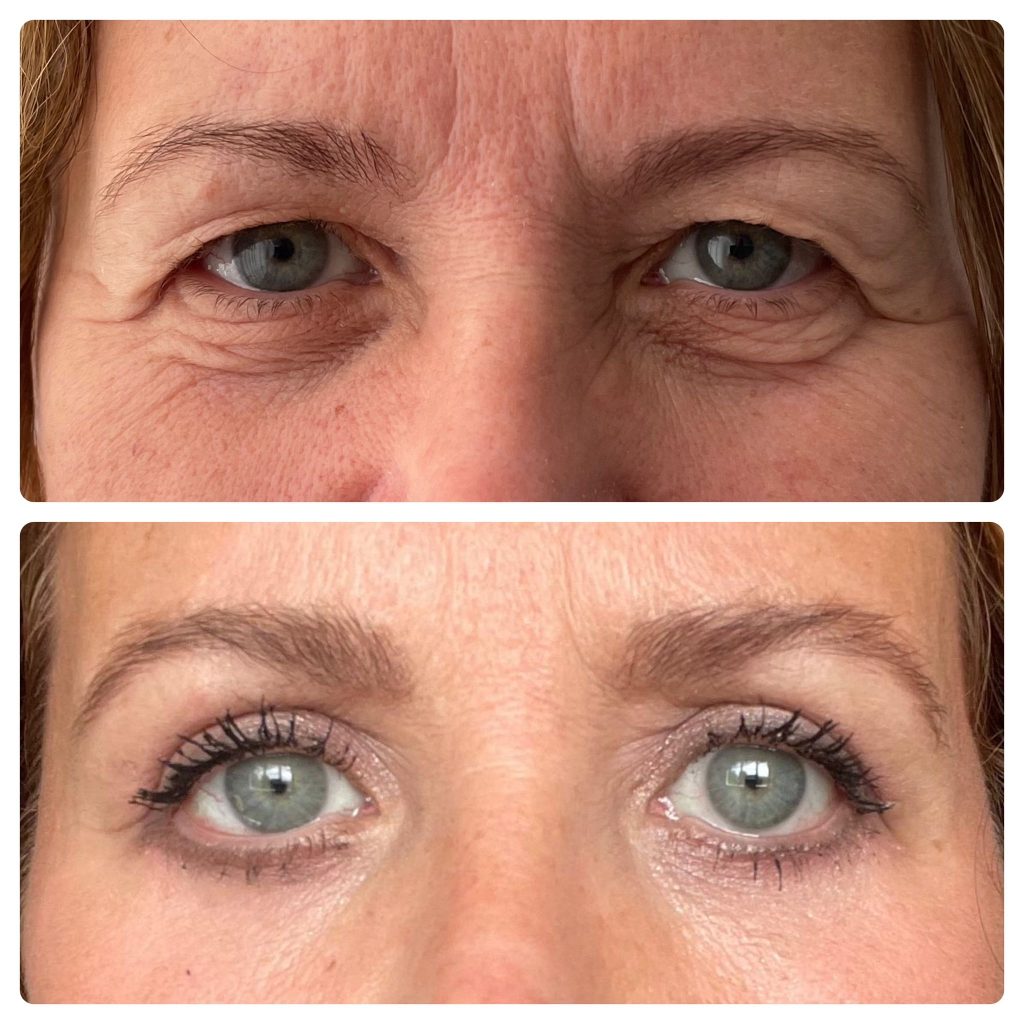
Importance of Choosing a Qualified Surgeon for Eyelid Surgery
You should choose a highly skilled surgeon to carry out your blepharoplasty if you intend to have one.
However, the crucial question is:
How can you locate the most suitable surgeon?
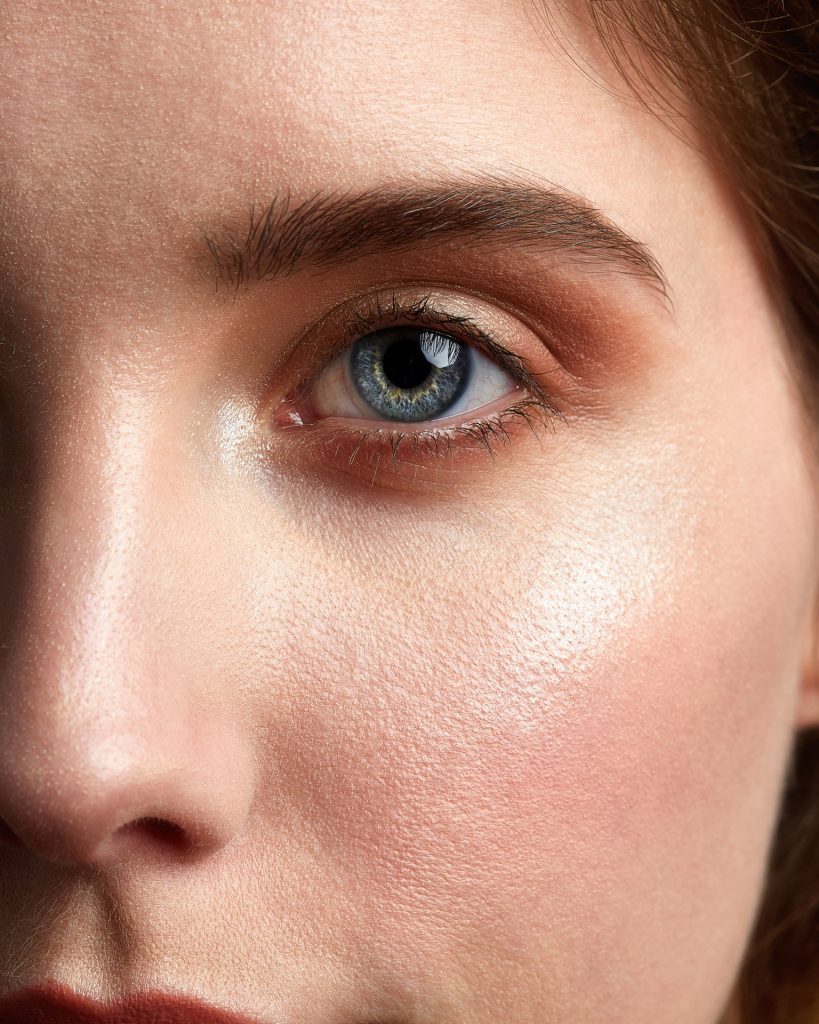
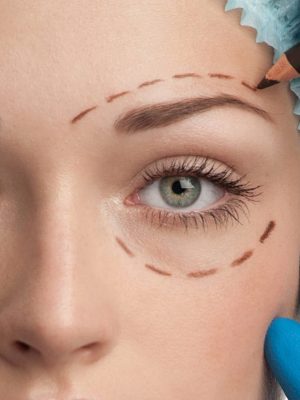
Your friends, relatives, and coworkers can provide you with a wealth of information on the surgeon.
They can let you know if they have experienced problems with the surgeon or other practice areas.
Inquire with your physician about any negative encounters they may have had with the specific blepharoplasty surgeon.
This can be very useful in assessing whether now is the right moment for you to have the operation.
Find someone else who has undergone similar procedures with this person to share their insights.
They can offer guidance on their experience and highlight what they found, good or bad, about the process.
Make sure the person making these recommendations knows exactly what needs to happen before judging based on knowledge.
If not, issues might arise because nobody anticipated how long recovery would take from these kinds of operations!
You may determine whether the surgeon is board-certified by visiting their website and checking their credentials.
To get certified as a board member, surgeons must voluntarily complete a set of tests,
which include:
- A written test measuring knowledge in anatomy, dermatology, and other subjects like methods used in cosmetic surgery.
States vary on how long it takes to complete, but generally, it takes one day to two weeks. - A hands-on, practical assessment where candidates show off their surgical talents by executing a real procedure on patients while they observe (or “undergo”).
Depending on how rigorously the state requires certification for this level, your state may also require additional exams beyond these two.
However, most states mandate that applicants who wish to have their name listed on official listing sites such as Yelp or Google Maps have at least a year’s worth of experience working in an office setting before taking any tests required by those sites’ guidelines.
Examine the surgeon’s evaluations and ratings.
Look for positive feedback.
Look for negative reviews.
Look out for evaluations from individuals who underwent the same treatment as you.
Selecting a surgeon should consider their schooling, medical degree, and experience.
Choosing a doctor with experience in Blepharoplasty surgery might give you confidence.
Looking through reviews on Google or Yelp or visiting your surgeon’s website are the greatest ways to discover if they have performed many blepharoplasties!
These are two excellent sites where patients can discuss their encounters with physicians (and surgeons).
Before deciding which hospital to employ for the treatment, consider contacting the doctor personally if there are any unfavourable evaluations regarding their work on Blepharoplasty procedures.
Before selecting one, viewing before and after pictures of the surgeon’s work is crucial.
Examining the following can help you identify a phoney before and after picture:
The subject in your updated photo clearly shows traces of surgery, whereas the subject in the original photo has no visible scars or deformities.
In both images, the eyes are open, indicating that they weren’t closed when the photos were taken. You should discuss this with your doctor during a consultation if they were closed during surgery at any stage. After that, they can describe what went wrong.
The teeth appear authentic. Should they no longer resemble yours, this might indicate a problem with the surgery.
Select a surgeon with the greatest experience, education, and satisfied patients to ensure you make the greatest choice.
The greater your surgeon’s experience performing Blepharoplasty procedures, the more likely you will achieve outcomes like those in these pictures.
Always select a surgeon with the greatest expertise, education, and glowing patient testimonials to ensure you make the best choice possible.
Your chances of getting results like the ones in these pictures are higher the more experience your surgeon has performing Blepharoplasty surgeries.
Working with a qualified Blepharoplasty doctor makes a difference because you will acquire the greatest available for the operation.
How Long Does the Eyelid Surgery Procedure Take?
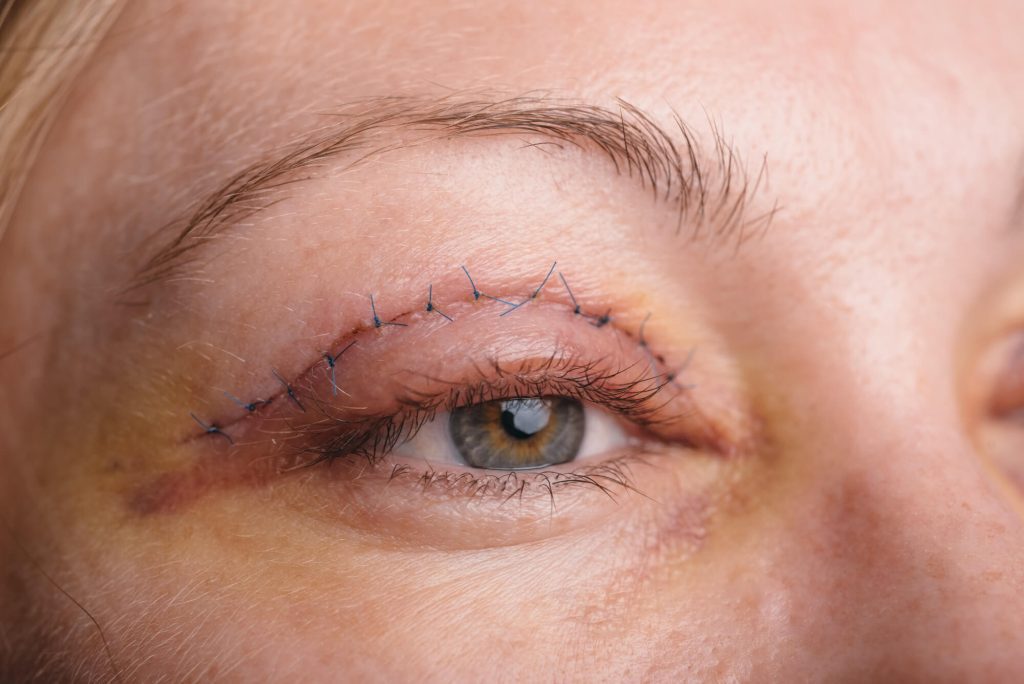
Your eyes will continue to age despite blepharoplasty.
However, the effects typically endure for a very long time.
LLowereyelid surgery is required less frequently than once, although upper eyelid surgery can last five to seven years to a lifetime.
Recovery and Aftercare of Eyelid Surgery
Here is how:
- Have someone assist you at home for one to two days following surgery and drive you home.
Take adequate rest. - Maintain a healthy diet.
- One of the negative effects of dehydration, using painkillers, and decreasing activity is constipation.
- Walk a lot, stay hydrated, and consider including raw fruit.
- Consume painkillers according to prescription.
- Unless your surgeon has given the go-ahead, avoid taking aspirin or any products that contain it.
- Take pain relievers with caution when driving, using alcohol, or making critical decisions.
- Avoid alcohol for three weeks due to fluid retention, even if you are not using painkillers.
- Resuming your iron-containing vitamin regimen should be done as soon as possible.
- Avoid being near or smoking yourself. This may be the main factor contributing to severe healing problems.
- Sleep with your head raised 45 degrees for a few days to reduce swelling.

What Activities Should You Engage In?
- As soon as possible, get moving.
- Walking helps to minimise swelling, lowers the risk of blood clots andpneumonia, and prevents constipation.
- Until you stop taking any painkillers (narcotics), avoid driving.
- Steer clear of strenuous sports, lifting, bending, and other activities that can elevate blood pressure.
- Limit your activities for three to five days; stay away from physically demanding activities for two to three weeks.
- After two to three days, read or watch TV.
- In 10–14 days, return to work.
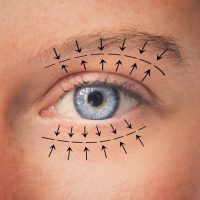

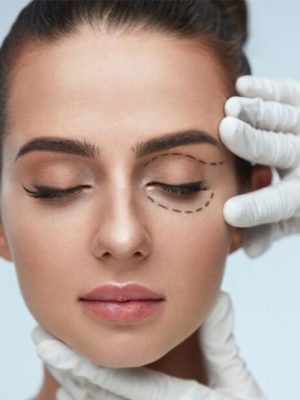
How to Take Care of the Incision
- For a minimum of 12 months, keep scars out of the sun.
- If being in the sun cannot be avoided, always wear a powerful sunscreen (SPF 30 or more).
- Continue using steri-strips. If stereo strips peel off, you can replace them with new ones if you have extras.
- He is a highly sought-after practitioner because of his dedication to quality and passion for changing patients’ lives.
- Use cold saline compresses for the first 24 hours to comfort and reduce swelling and bruising.
- Shampooing the hair after surgery is generally not necessary. However, wait at least two weeks before wearing contact lenses.
- You will be extremely sensitive to the sun, wind, and other environmental aggressors for several weeks. Use eyelid-specific sunscreen and wear sunglasses throughout this time.
When to Call the Doctor
- If you have bruises or more swelling.
- If the oedema and redness last for several days.
- If the area around the incision is becoming more red.
- If using medicine does not alleviate your severe or growing pain.
- If any adverse drug reactions occur, such as rash, nausea, headache, vomiting, or constipation.
- If your oral temperature is more than 100.4 degrees.
- If the drainage from the incisions appears yellowish or greenish or if an unpleasant smell is detected.
- Suppose you find it difficult to control the bleeding from your incisions with mild pressure. Suppose you have paralysis or lack of sensation.
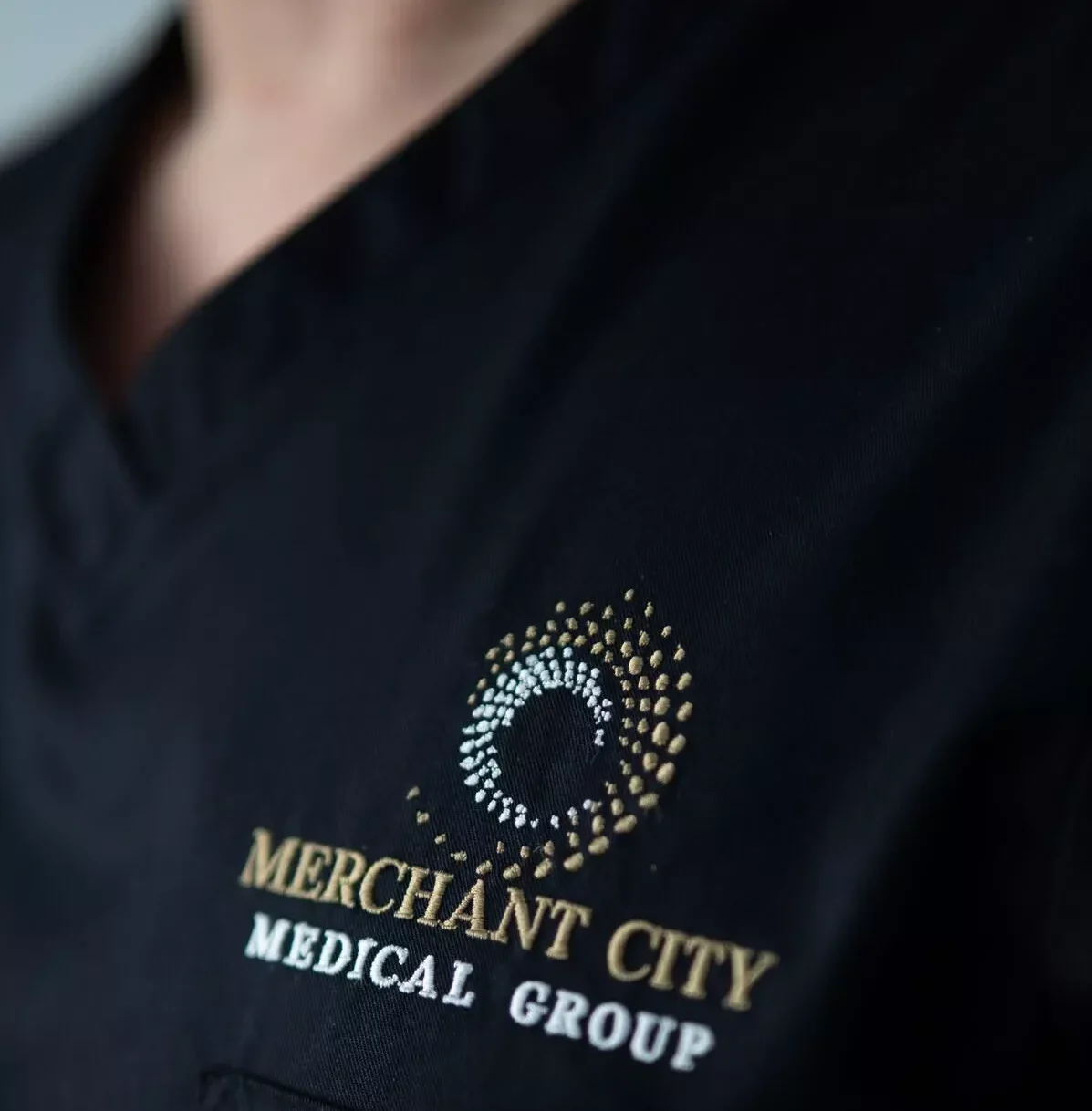
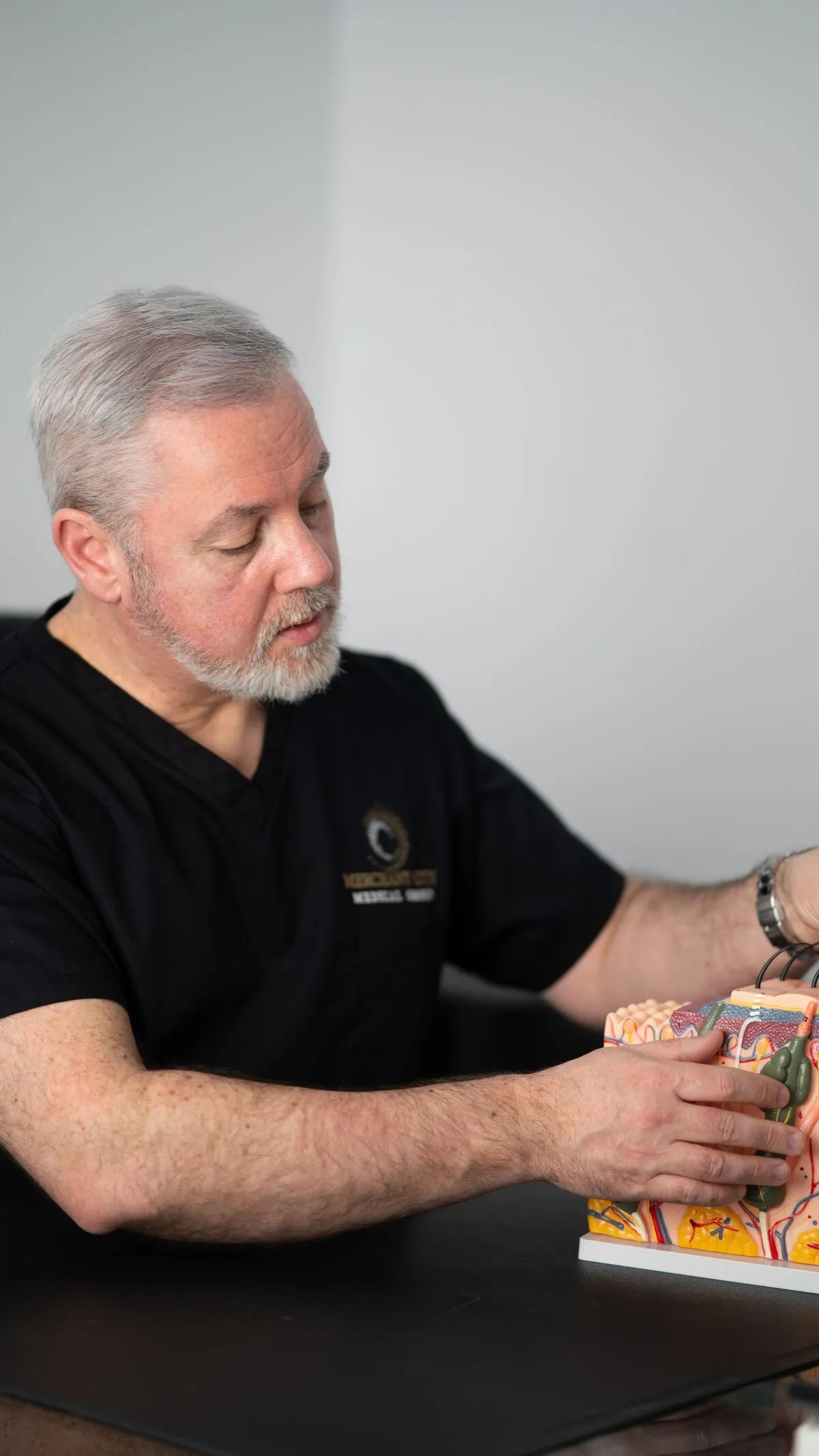
Cost and Financing Options for the Eyelid Surgery
Although eyelid surgery varies, cosmetic eyelid surgery typically costs $3,000.
The price range for all four lids is between $2,000 to $5,000. Additionally, lower-lid blepharoplasty prices are higher than upper-lid costs.
The entire cost of a blepharoplasty excludes:
- Anaesthesia.
- Facilities for operating rooms.
- Medications.
- Medical examinations.
- Additional expenses particular to plastic surgeons.
The treatment type, complexity of the case, expertise level, and other variables will all affect a surgeon’s price.
Numerous surgeons provide patient funding plans.
Please note that most health insurance plans do not pay for cosmetic surgery or its side effects, including eyelid lift surgery.
Where to Get the Eyelid Surgery in the UK and Europe
With our bespoke service, Merchant City Medical Group guarantees that a plan is created just to meet your needs.
We take great satisfaction in providing the highest standards along with the expertise and support you deserve on this transformative journey.
Our team’s passion for enhancing lives and commitment to excellence makes us a trusted destination for aesthetic and reconstructive care. Whether restoring confidence after trauma or enhancing natural beauty, we’re here to help you feel and look your best.
The Take Away Point
Blepharoplasty, or eyelid surgery, can rejuvenate your appearance and enhance eye function by removing excess skin, muscles, and fat from the eyelids. This procedure addresses issues like droopy lids, under-eye bags, and sagging skin, often caused by ageing. Whether you need functional blepharoplasty to improve vision or cosmetic blepharoplasty for a more youthful look, our specialists at Merchant City Medical Group offer expert care tailored to your needs. With skilled hands and a patient-focused approach, we help restore confidence and enhance natural beauty.
Call us today or book a free consultation to explore how blepharoplasty can benefit you.



